A Rock Documentary That Won't Die
'Heavy Metal Parking Lot,' a cult classic documentary, offers a glimpse of youth culture lived by millions of people now in their 50s
"Heavy Metal Parking Lot" is a time machine that works for 15 minutes.
The documentary, filmed on the last day of May in 1986, consists of brief interviews with exuberant and largely inebriated adolescent fans outside the Capital Centre arena in Landover, Maryland, before a show by the English heavy metal band Judas Priest.

What ensues is a whirlwind of sight and sound — kids from Maryland, the District of Columbia and Virginia doing and saying crazy things for a camera whose presence they were clearly not accustomed to in daily life.
Nearly 40 years later, the film, which circulated widely as a bootleg during the 1990s before becoming an internet staple in the 21st century, offers a unique window into the 1980s metal subculture and remains absolutely hilarious.
Teenage Id Unleashed
Stars of the film include "Zebraman," a vulgar young fella in a black-and-white, zebra-print catsuit. After declaring "Heavy metal rules!" he shares vulgar personal views on other music of the day: "All that punk s— sucks. It doesn't belong in this world. It should be on f——g Mars." He was equally vulgar and disdainful of Madonna.
"It was a carefree time in our lives, no responsibilities."
"Graham" is another fan favorite. A shirtless teenager holding a bottle of beer, he tells the interviewer that his name is "Graham, like gram of dope." Graham then calls for the legalization of narcotics and the construction of a joint that stoners can hold from coast to coast in the fashion of "Hands Across America," a one-day stunt earlier in the month to raise money for hungry families.
A redhaired young woman known as "Glen Burnie Girl" is another scene stealer. After announcing that she's from the Baltimore suburb, she answers several questions with enthusiastic "Hell yeahs." When asked about Judas Priest frontman Rob Halford, she intones that she'd like to "jump his bones" in a quintessential "Bawlmer" accent, elongating and shifting vowels without mercy.
A Cultural Mirror
For millions of people now in their 50s and early 60s, the parking lot scene that co-directors John Heyn and Jeff Krulik captured is instantly relatable.
"I think the reason the film has such staying power is that so many people can relate to this," Krulik said. "You were either at that concert or sat next to somebody in homeroom who was."
"It was a carefree time in our lives, no responsibilities," said Eileen Zelaya, who appears in the film. She was 18 at the time and attended the show with her friend Kelly. The pair remain close.
Eileen delivers one of the classic lines of the film. When asked what she's drinking, Eileen says "Jack Daniels and Coke, what else?" Zelaya grew up in Rockville, Maryland, listening to everything from Tom Jones to Motown but remains a self-professed Metal Head to this day.
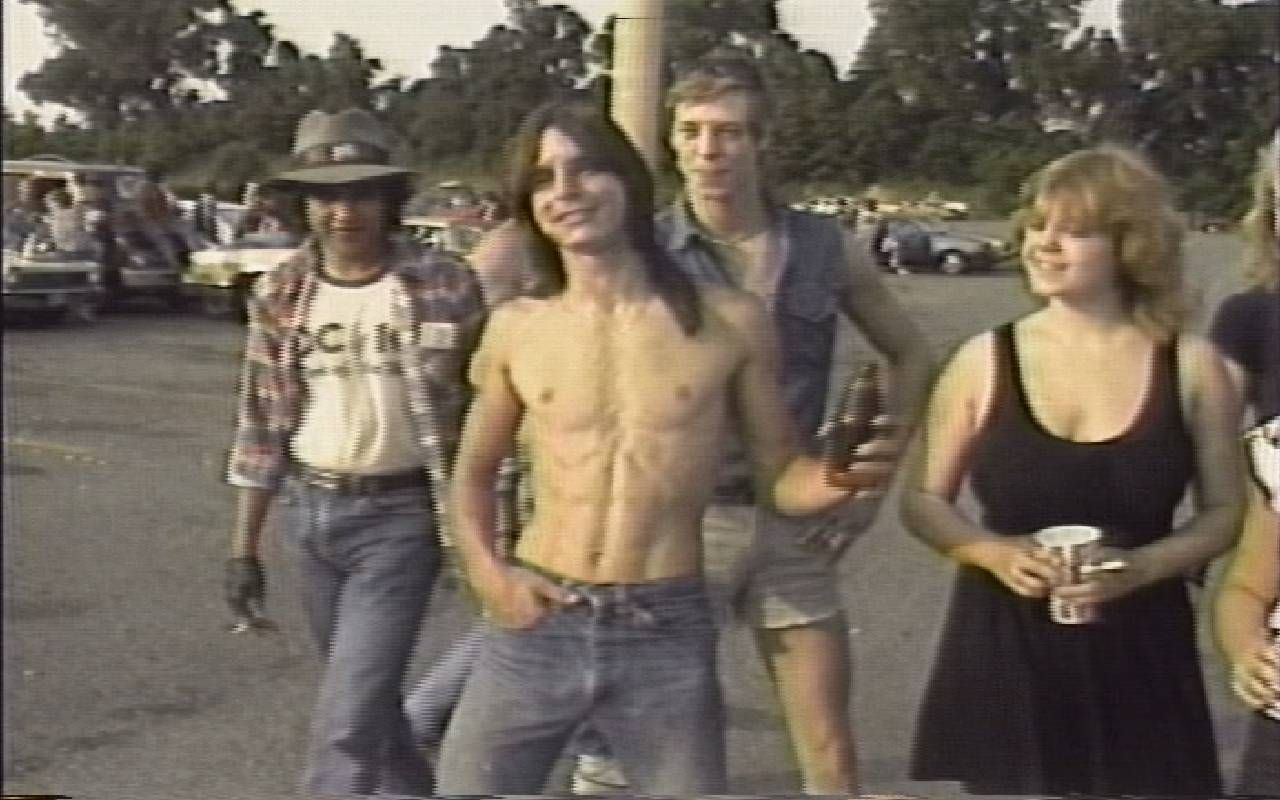
Even Judas Priest frontman Rob Halford sings the film's praises. "I loved the way that there were so many larger-than-life characters that just leapt off the screen and they were having the times of their lives," he wrote in "Biblical," his 2022 memoir.
Capturing a Moment
"It captured how [heavy metal] fans looked, dressed, spoke, and thought," he added. Clips from the film were even shown during the band's 2022 induction into the Rock and Roll Hall of Fame.
Before "Heavy Metal Parking Lot" became part of the music documentary canon, viewed by millions each year on YouTube and Vimeo, discussed at academic conferences, and even the subject of a year-long exhibit at the University of Maryland's libraries, it started as the marriage of an idea and some easily accessible equipment.
John Heyn went to film school at Northwestern and Jeff Krulik studied English at the University of Maryland. Heyn, a Baltimore native, and Krulik, who grew up in the Maryland suburbs, met in 1985 and became fast friends.
"I loved the way that there were so many larger-than-life characters that just leapt off the screen and they were having the times of their lives."
"We had similar sensibilities and interests," Krulik said. "We both were interested in music, culture, subcultures and eccentricities." He worked as the community television director for a cable company in Prince George's County, Maryland, just to the east of Washington, D.C. His job gave him entrée to public access television cameras and equipment.
"One day, John had this idea that we go videotape heavy metal fans before a concert," Krulik said. "The studio I ran was near the Capital Centre."
At the time, heavy metal was a major subculture among young people across the country, and the next metal act booked to perform at the Capital Centre — home of the NBA Washington Bullets and NHL Washington Capitals — was Judas Priest. At the time, the band had seven consecutive albums certified as gold, platinum or higher by the Recording Industry Association of America. (It eventually extended the streak to 11.)
Neither Heyn nor Krulik were metal fans and they didn't even attend the show. They simply paid to park and walked around the lot for two hours on a hot, late Spring Saturday night, taking turns holding the shoebox-sized camera and clunky microphone.
Krulik says it was just dumb luck that they chose to attend a concert by Judas Priest, whose anthemic songs are among metal's most enduring classics. Heyn and Krulik now consider themselves fans of Priest. It was further dumb luck that they ran into the people that they did in such a short film shoot.
Dumb Luck and Smart Editing
"It's a little deceiving in a way because it makes you think there is non-stop chaos and bacchanalia going on in that parking lot but John whittled it down and took the most entertaining, lively footage," Krulik said. Some of the attendees that night weren't even sure who they were going to see. One of the interviewees thought they were there to see the band Metallica.
"People went to concerts, period. It was kind of like a tribal gathering," Krulik said. Writer Craig Giffen, a longtime fan of the film, cataloged the band T-shirts that concert goers wore in "Heavy Metal Parking Lot," finding a significant number of ZZ Top shirts in large part because the group had played the Capital Centre the previous weekend.
After filming, Heyn and Krulik went back to Krulik's office to look at the tapes. Krulik came up with the title that night. Finding a place to show the film was a challenge. Few film festivals in 1986 were equipped to show movies only on videotape. The first screening of "Heavy Metal Parking Lot" took place in October 1986 at D.C. Space, a venue that held a monthly event where budding filmmakers could show their work.
Ready to Mothball the Project
Over the next four years, Heyn and Krulik screened "Heavy Metal Parking Lot" on other occasions, including twice at the video-equipped Kennedy Center, home of the American Film Institute. At that point, they were ready to "put it in moth balls."
But the film slowly took on a second life, becoming arguably the first viral video — albeit one spread by copying grainy second- and third-generation videotapes, primarily on the West Coast. A copy of "Heavy Metal Parking Lot" became de rigueur on alternative rock tour buses, including those of Nirvana and Sonic Youth.
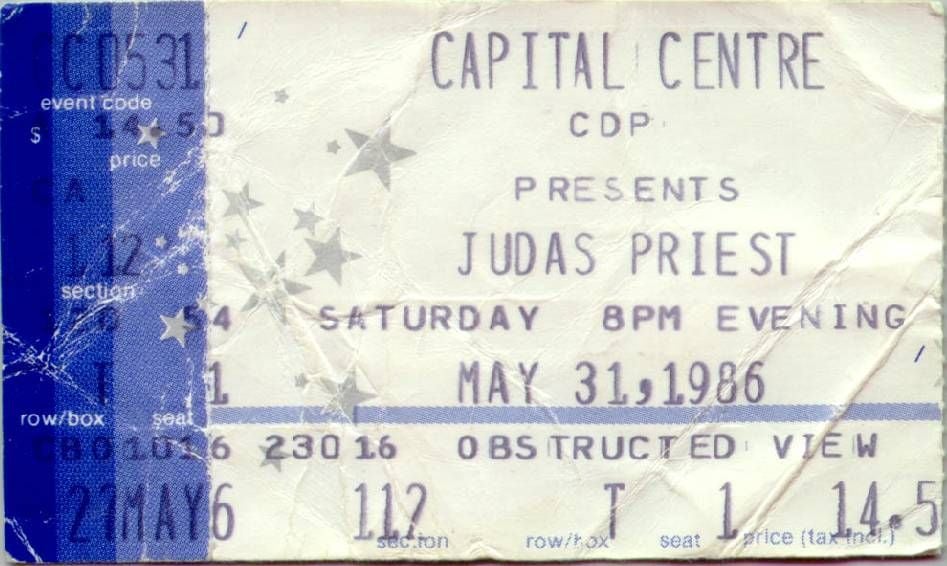
Los Angeles' Mondo Video, the epicenter of cult video in the 1990s, rented out copies of it to people in the entertainment business. Sofia Coppola rented the film from Mondo and then called up Heyn out of the blue, asking if she could use it for a show on Comedy Central (it never aired).
The sudden enthusiasm for "Heavy Metal Parking Lot" on the West Coast was the product of a college friend of Krulik's named Mike Heath, the film's "Johnny Appleseed."
Nirvana Roadie to the Rescue
"Mike was moving out west and he came by my new job at the Discovery Channel," Krulik recalled. "He tells me he's moving to San Francisco and asks for copies of 'Heavy Metal Parking Lot.' I ran him off like four or six copies. He got it into people's hands who were well connected, including a roadie of Nirvana's."
"I was a pretty typical suburban heavy metal fan, very awkward at that phase in my life, and I found solace through heavy music and the community around it."
Not long after "Heavy Metal Parking Lot" resurfaced in the mid 90s as a cult classic, the film's directors started hearing from people who appeared in the film.
The first was Jay Hughen, known in the "Heavy Metal Parking Lot" Family as "Alumnus 001." Hughen was part of a group of friends from Reston, Virginia, who appeared in the film. His friend Michelle Jackson characterized Reston as "Mayberry, U.S.A."
"That was senior year of high school, I was a pretty typical suburban heavy metal fan, very awkward at that phase in my life, and I found solace through heavy music and the community around it," Hughen said. He went to shows at the Capital Centre all the time, busing tables at restaurants so he could buy concert tickets.
Discovering Their Celebrity
"I remember being the one that organized the road trips down there almost every time. Every time Iron Maiden or Judas Priest or Deep Purple or somebody rolled into town, we'd go and we'd bring the party with us."
After college, Hughen moved to California and got into the record business, working at A&M Records and later Warner Brothers. Now, he works in the live music business for Nederlander.
"Someone told me in the mid-90s that they just watched this hilarious bootleg film that was a documentary about some kids at a Judas Priest show in Maryland somewhere and it was the funniest thing they'd ever seen," Hughen said.
Hughen, living in Los Angeles at the time, said he attended virtually every D.C.-area Priest show in the '80s and vaguely remembered being filmed. He trekked over to Mondo Video, the natural habitat for just such a film.
"I told the guy behind the counter at Mondo that I think I'm in this video and he thought that was hilarious," Hughen said. "This guy behind the counter at Mondo had apparently turned on a lot of LA subculture to this film in the '90s. His head almost exploded."
"That's one of the first times that I understood that this isn't just a movie. This is a cultural moment that a lot of people know about, so I better embrace this and not be embarrassed by it."
Roughly a year later, Hughen was the guest of honor at a screening of "Heavy Metal Parking Lot" and subsequent Q&A session at Mondo Video.
"That's one of the first times that I understood that this isn't just a movie," he said. "This is a cultural moment that a lot of people know about, so I better embrace this and not be embarrassed by it."
He soon learned that Sonic Youth's Thurston Moore was a huge fan of the film and often recited lines from it. After reaching out to Moore, he received a copy of the film and a handwritten note from the Sonic Youth guitarist. A couple of years later, Hughen emailed Heyn and Krulik to let them know that he'd seen their film.
"John still has the original email I sent him," Hughen said. "It says something along the lines of 'Hey man, You have a movie called "Heavy Metal Parking Lot" and I'm in it and I just wanted to say hello.' They had never heard from anyone who was in it."
Hughen's email kickstarted the creation of a community of connected "Heavy Metal Parking Lot" alumni that now numbers nearly 30.
Alumni Reunions
"The internet was very helpful in connecting with our alumni, our family, if you will," Krulik said. The group now holds reunions both in person and online (during the pandemic) to commemorate different anniversaries of the film.
"Zebraman" attended the 30th reunion, finally embracing his Heavy Metal legacy. Graham Owens of "Gram of Dope" fame even wrote a fascinating memoir that piggybacked on his minute of screen time in the film. Sadly, Owens is one of several "Heavy Metal Parking Lot" alums that have died.
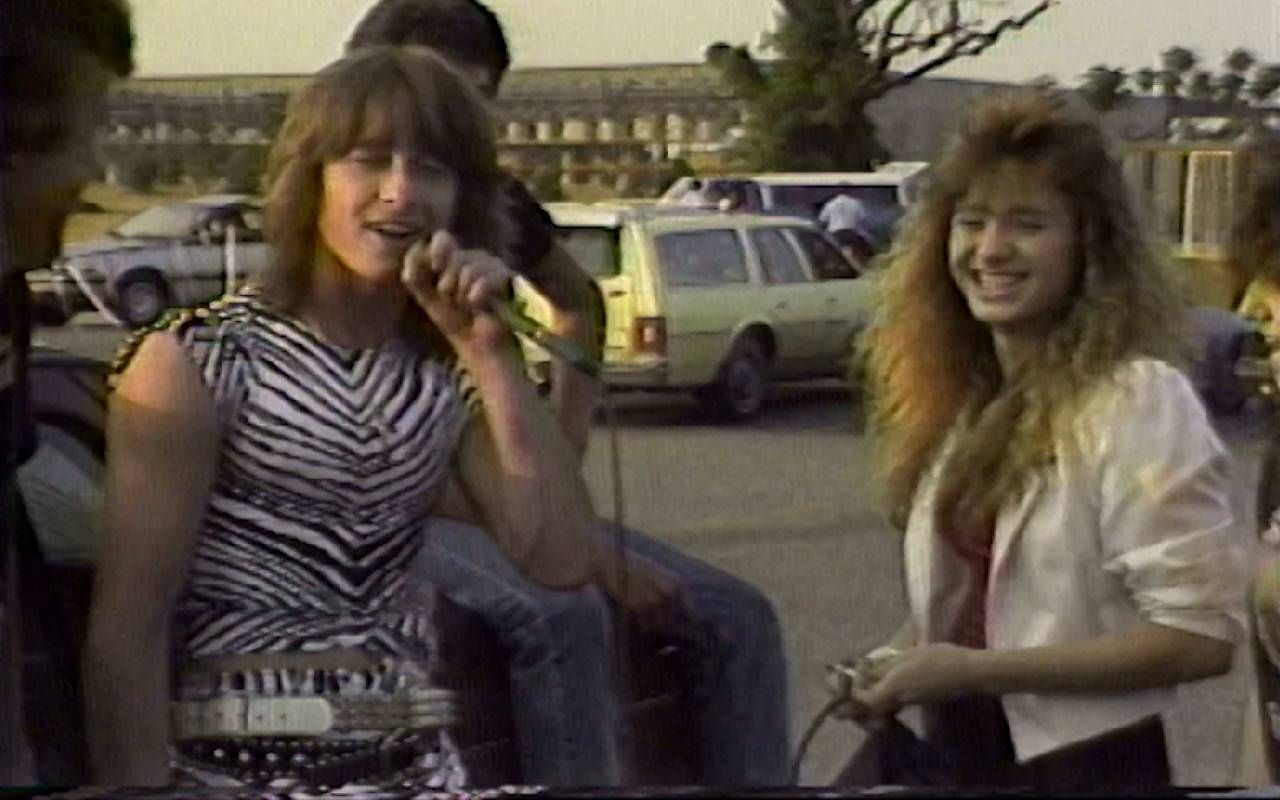
Eileen Zelaya remembers being filmed that warm May afternoon but wasn't aware of "Heavy Metal Parking Lot" until years later, when a cousin of her husband called to say he'd seen her in the film. "At first it freaked me out," Zelaya said. "I had to get it myself and see what it was all about."
She thinks she sounds "ridiculous" but has enjoyed being part of the "Heavy Metal Parking Lot" family, viewing it as a window back to the "crazy good times" of the 1980s.
Remarkable Transformation
"Ian Hill, I'm a former bass player, you're an inspiration of mine," yells a smiling, shirtless young man with long hair, striped suspenders, a Star of David necklace and a second necklace bearing his name in Hebrew. That young man is Zev Zalman "Z.Z." Ludwick, one of the film's most fascinating alumni.
Z.Z. was 22 at the time. Back then, he was called Robbie (his English name), managed a pizza shop by day and played bass in a heavy metal band by night. He grew up in Silver Spring, Maryland, the son of Holocaust survivors.
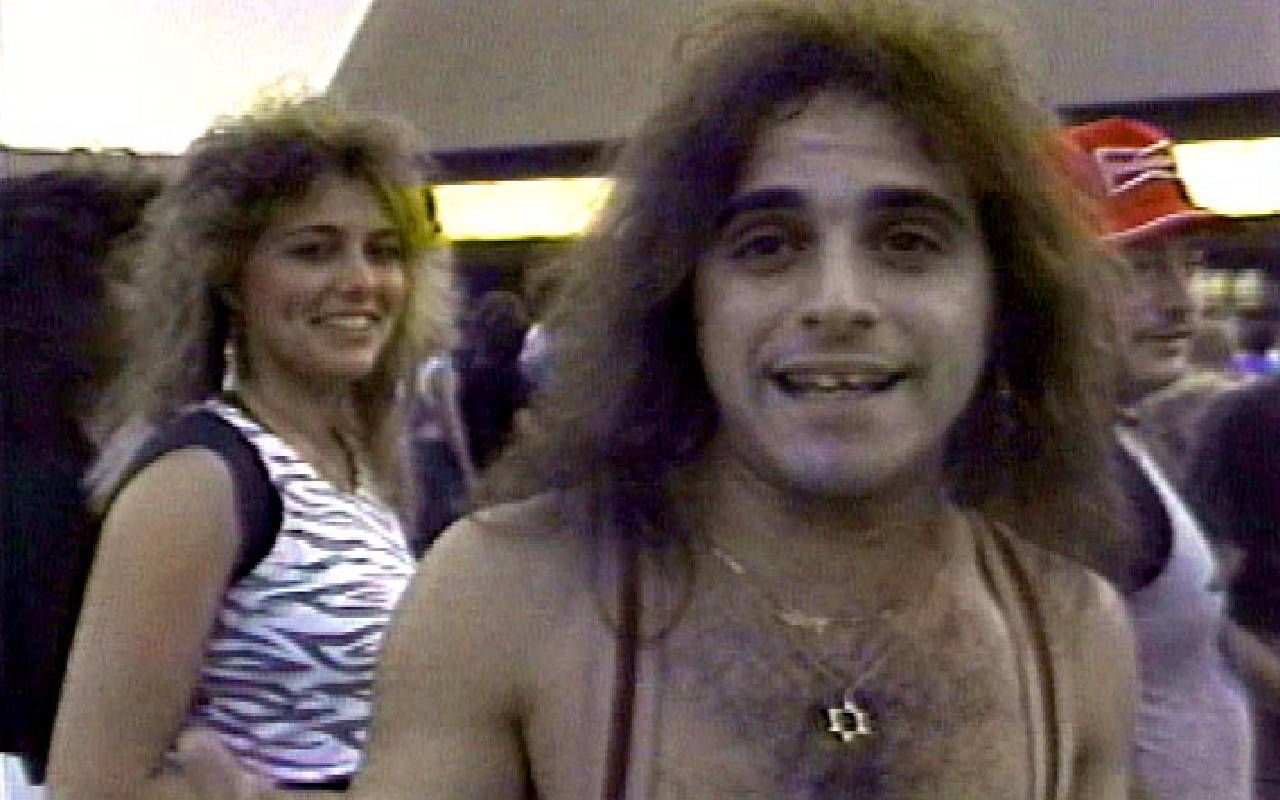
Though secular at the time, he displayed pride in his background in a manner similar to many of his Christian friends. His parents brought him back the gold Jewish star necklace from a trip they made to Israel.
"I was completely trying to live a decadent lifestyle," Ludwick said, describing himself as under the influence of a variety of substances that evening. When describing himself as a "former bass player," Ludwick meant to say, "fellow bass player."
Z.Z. estimates that he attended between 200 and 300 shows at the Capital Centre.
"I thought I was a stupor-laden idiot. I was sort of embarrassed, but it was funny at the same time. I had no recollection of what I said."
"It was like that several times a month. It was the place to go and it was always packed. We always had that tailgating thing going on. The tailgating was as important as the concert," he said. "They could have shown up at any concert at that time and it would be the same people, same attitude, same everything."
Ludwick's main recollections of the evening include George Lynch, the guitarist for opening act Dokken, having to leave the stage after three songs due to illness. He, too, remembers being cold in the air-conditioned venue and wishing he'd worn a shirt.
A couple of years later, Ludwick learned of "Heavy Metal Parking Lot" from a bandmate and saw himself in action at the Capital Centre.
"I thought I was a stupor-laden idiot," he said. "I was sort of embarrassed but it was funny at the same time. I had no recollection of what I said."
Embraces Hasidism
Several years later, Ludwick turned away from the decadent lifestyle. Ludwick embraced Hasidism, a tradition-bound religious movement within Judaism, and gave up the substances that had clouded his life. He apprenticed at a violin shop and became a luthier, a skilled artisan who repairs stringed instruments. Currently, he runs Ludwick's House of Violin in Silver Spring, where he sells, repairs and adjusts stringed instruments.
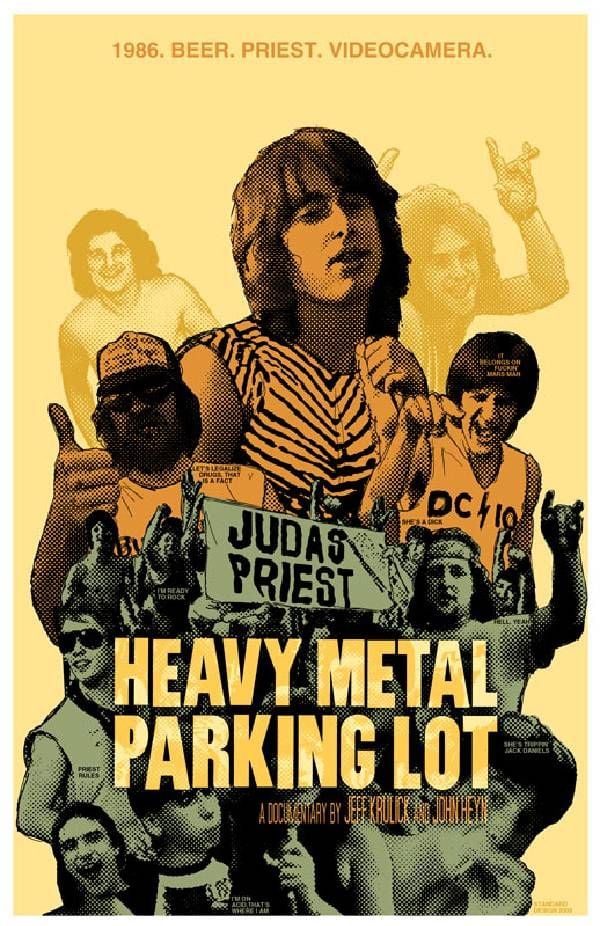
During the 1990s, he embraced bluegrass music and has played in several bands. He befriended Jeff Krulik and the pair have done several videos documenting his change of direction.
"And I stopped going by Robbie and started going by my Hebrew name, Zev Zalman, but my brother started calling me ZZ. I've been ZZ for the last 15 years or so," he said. "Robbie has left the building. ZZ is a spiritual guy who gets his high now from playing instruments and doing spiritual meditation."
Heavy Metal Spinoffs
Heyn and Krulik worked in the 2000s to further establish the "Heavy Metal Parking Lot" brand. In 2006, "Heavy Metal Parking Lot" received its first official DVD release, which featured a "Where are They Now?" companion documentary, including a brief interaction with a notably sedate "Zebraman," who had settled into a calm, suburban life.
The popularity of "Heavy Metal Parking Lot" spawned a short-lived series on cable television station Trio called "Parking Lot" in which Jeff and John produced similar films, talking with Phish and Yanni concert goers, soap opera fans waiting to meet stars outside the Daytime Emmys, and Civil War reenactors.
"Heavy Metal Parking Lot" enjoyed a 30th anniversary screening at the South by Southwest film and music festival in Austin, Texas, and a year-long exhibit at the University of Maryland libraries. During the pandemic, Krulik hosted a 35th anniversary "Heavy Metal Parking Lot" Family Reunion on Zoom. Much of the "Heavy Metal Parking Lot" content is available on the movie's website and on Vimeo.
"We're appalled by the language if we're screening it somewhere and we don't give a disclaimer, like at an academic conference."
There have been many more screenings of the film too, including at academic conferences, where scholars attest to the anthropological significance of this 15-minute artifact.
"We're appalled by the language if we're screening it somewhere and we don't give a disclaimer, like at an academic conference," Krulik said.
An Era in American Culture
For a certain group of enthusiasts (me included), "Heavy Metal Parking Lot" has become a regular part of their vocabulary. For a broader audience, the film is shorthand for an increasingly distant but hardly forgotten era in the history of American culture.
"It was a little more free-flowing then, free of blowback," Hughen said of the moment that Krulik and Heyn captured. Certainly, the directors captured what writer Greil Marcus called the "old, weird America," the eerie and ordinary sensibilities of people that have been mediated into obscurity by the understanding that everything people say or do is being recorded.
For those who lived "Heavy Metal Parking Lot," the movie has become a "badge of honor" in Hughen's words.
"I'm really heartened by the fact that so many people relate to it," he added. "It was a cultural snapshot, pre-internet, pre-social media. It was a moment in time that a lot of other people experienced. It has been a great shock but a lot of fun to have people recognize the movie, know it and revere it. I'm proud of its place in a lot of people's hearts and minds."

